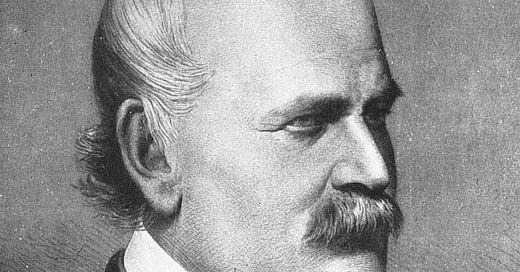Jesus came to save… but is it human nature to accept it?
Case Study: Dr Ignaz Semmelweis
The story of Jesus is that he is the way, the truth and the life. In other words, he is the personification of the truth which will lead to more life for humanity. Through him, people are saved. Yet, he was rejected and crucified. There is no better case study to illustrate this frustrating pattern of humanity than with the life of Dr Ignaz Semmelweis.
Who is Dr Ignaz Semmelweis?
Dr Ignaz Semmelweis (1818–1865) was a Hungarian physician and scientist in the 1800s who was curious about why so many women were dying during childbirth, known as childbed fever. He was curious as to why women would beg to not be delivered at a particular clinic, even to the point that they would rather give birth on the street – and that there was a higher chance of morality when mothers done so than at the Vienna General Hospital First Clinic.
The common belief at the time was that the women dying in childbirth were those receiving a punishment from God of their sins (such as alleged promiscuity). But Dr Semmelweis was still curious and proceeded to investigate.
Hypothesis and Experiment
Dr Semmelweis observed the actions and routines of the nurses and doctors dealing with the pregnant women. A new due-date woman would come to the hospital and the nurses and doctors would tend to her, directly from performing autopsies in the mortuary, rinse their hands with water, and then proceed to examine women in labour or deliver babies. Washing hands with soap was not a standard practice at that time.
Dr. Semmelweis implemented a handwashing protocol with a chlorinated lime solution (a make-shift soap using lemon, bleach and water) and made half of the doctors to wash their hands after they existed the mortuary, before handling their patients, and the other half he allowed to continue as normal. The results returned. Of the group where the doctors washed their hands before delivering the babies, the women stopped dying. In the control group, where doctors continued their usual practices, the deaths continued. This showed that the cause of death was to do with cleanliness, which laid at the doctors’ hands, not divine punishment.
Crucifixion
Although his innovation saved lives, Semmelweis was crucified. The medical establishment and doctors committee were offended by his findings and voted to ignore the results and return to how things had always been done. They labelled Dr Semmelweis mentally retarded and locked him away in a mental institution for the remainder of his life.
Semmelweis suffered a mental breakdown and died in 1865 after suffering from a wound allegedly caused by being beaten by the guards looking after him.
Resurrection
Louis Pasteur, Joseph Lister, and others picked up on Dr Semmelweis’s work which eventually lead to the development of germ theory in the 1860s and 1870s. If it wasn’t for Semmelweis’s sacrifice, we may not be using soap today.
Jesus came to save… but is it human nature to accept it?
The doctors rejected the empirical evidence before them. Why would they reject facts? Why would they allow for more deaths to continue that to do what saved lives? Why do we hold onto our beliefs when the evidence is before us?
Quite simply, pride.
The doctors and nurses were unwilling to admit that they were wrong. Their ego would not allow it.
Hence, it is written,
And he said: “Truly I tell you, unless you change and become like little children, you will never enter the kingdom of heaven.”
Matthew 18:3 [NIV]
In other words,
Unless you are able to be humble like a child who is able to listen, learn and change their ways, then you will not obtain better results. You will continue to reap the results of chaos, stagnation and, as in their case, death.




